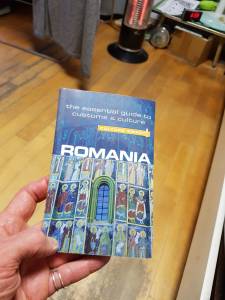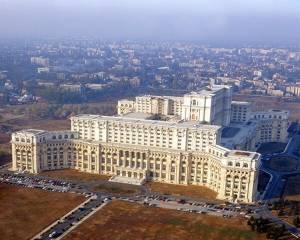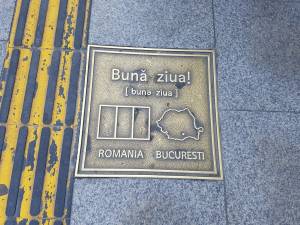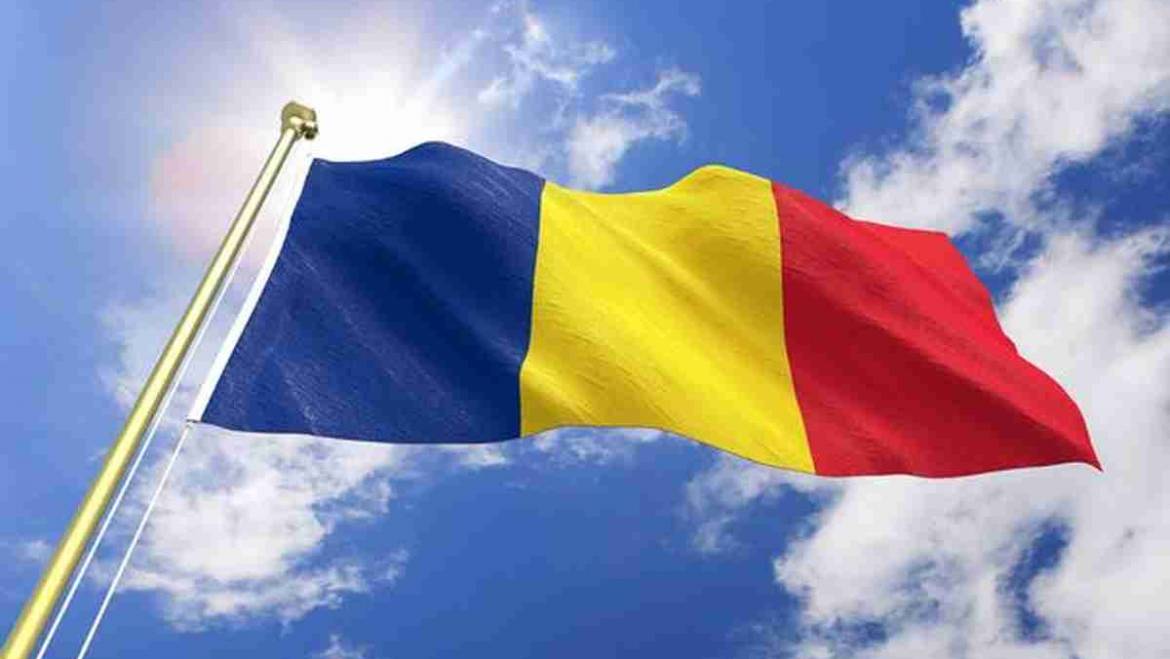While I have never been to Romania or anywhere near it, I have two connections, however slight. Dr. Reuven Lazarowitz, one of the people featured in my 1994 book Coming to Texas / International Students at the University of Texas, was born in Constanta, a port city on the Black Sea. He has been a citizen of Israel now for many decades. Eleonora “Elly” Rus, by contrast, has lived in Romania nearly all her life—in Lipova and Arad, in the country’s Banat region. Dr. Lazarowitz is a scholar in the field of science education, and Elly is a retired nurse.
Dracula was fiction
Partly to honor these two fine people, I bought and read a pair of books: Romania by Debbie Stowe (Kuperard, 2008) and Romania / Borderland of Europe by Lucian Boia (Reaktion Books, 2001). The former was somewhat of a guidebook, and the latter was a more comprehensive assessment of the country’s  history, culture and personalities. Both, I would say, took an unflinching look at this nation of 21 million. I already knew, and these books confirmed, that there is only a flimsy connection between Bram Stoker’s Count Dracula and Vlad Tepes, the prince of Wallachia in the mid-15th century. Dracula was pure fiction—the vampire who sucks blood from his victims in a Gothic castle—whereas Vlad was all too real. He took cruelty to extremes, impaling his enemies on stakes, and thus his cognomen of Vlad the Impaler. He was not a man to be trifled with.
history, culture and personalities. Both, I would say, took an unflinching look at this nation of 21 million. I already knew, and these books confirmed, that there is only a flimsy connection between Bram Stoker’s Count Dracula and Vlad Tepes, the prince of Wallachia in the mid-15th century. Dracula was pure fiction—the vampire who sucks blood from his victims in a Gothic castle—whereas Vlad was all too real. He took cruelty to extremes, impaling his enemies on stakes, and thus his cognomen of Vlad the Impaler. He was not a man to be trifled with.
Let’s jump forward several centuries. Romania, a Balkan country many times conquered and occupied by the Turks and the Russians, made the mistake of allying itself with Germany during World War II. It changed sides in 1944, but too late. When hostilities ended the next year, Romania (along with Poland, Czechoslovakia, Yugoslavia, East Germany, Bulgaria, Albania and Hungary) was subject to the tender mercies of the Soviet Union. It was far behind the Iron Curtain and one of the Russkies’ most loyal satellite states. Two leaders must be mentioned here, starting with Gheorghe Gheorgiu-Dej. Taking his directives from Joseph Stalin, he ruled from 1947 to 1965, during which time Romania was the scene of massive human rights abuses. To his credit, Gheorghiu-Dej later relaxed things somewhat as trade relations with the West improved. Still, a lot of damage had been done to the people and the country. The blessings of oil and grain were frittered away, poverty grew and Romanian culture was slowly choked of much of its charm.
Ceaușescu
Then came Nicolae Ceaușescu and his wife Elena. He was general secretary of the Romanian Communist Party for 24 years, during which time he had an even more deleterious effect than Gheorgiu-Dej. It would take 10 pages to list all his idiotic plans to turn Romania into the fulfillment of Marx’s and Lenin’s dream of communist utopia, and virtually none of them worked.
In June 1971, Ceaușescu paid a state visit to China and North Korea. In Beijing, he met an ailing Mao Zedong and in Pyongyang, Kim Il-Sung. The Chinese’ so-called Cultural Revolution was then going on, and he liked what he saw as a means of ideological mobilization, not to mention Mao’s cult of personality. Then on to North Korea where he got the full treatment as a visiting communist leader, including mass games at a stadium. Why couldn’t that kind of grandiose spectacle and stage-managed adulation be transplanted to Romanian soil? When he got back to Bucharest, Ceaușescu adopted honorifics like “beloved and esteemed leader of the Romanian people,” “genius of the Carpathians” and “hero among heroes.” He even started giving on-the-spot advice, a favored gambit of his fellow dictator in North Korea.
Ceaușescu ordered implementation of numerous large-scale projects that were expensive and in some cases environmentally catastrophic. Some 5,000 rural villages were bulldozed, their citizens sent to the towns to “help build communism.” Countless blocks of dreary apartments were hastily erected and continue to mar Romania’s urban landscape. All this was done in the name of the egalitarian ethos, but Nick and Elena were living very well indeed. Ground was broken in 1984 for the Palace of the Parliament (now called the House of the People), a gargantuan edifice that was entirely unnecessary. Not finished  until 1997, it cost 3 billion euros and an estimated 3,000 people died in the process of building this symbol of Ceaușescu’s megalomania. It is today 70 percent empty.
until 1997, it cost 3 billion euros and an estimated 3,000 people died in the process of building this symbol of Ceaușescu’s megalomania. It is today 70 percent empty.
Oppressive, and yet savvy
The best that can be said for Ceaușescu is that he was savvy enough to take advantage of Romanians’ traditional deference to authority, and benefited from having one of the world’s most brutal and repressive secret police forces, the Securitate.
Ceaușescu did not always kowtow to the Russians. In 1968, he refused to participate in the (Soviet-led) Warsaw Pact invasion of Czechoslovakia; he approved of Alexander Dubcek’s liberalizing policies there. And he bucked the Russians again in 1984 by sending his country’s athletes to the Los Angeles Olympics. Fourteen Eastern Bloc nations and their allies sat it out in a tit-for-tat gesture as the U.S. had boycotted the 1980 Games in Moscow due to the USSR’s invasion of Afghanistan. These things help explain why Ceaușescu was a favorite of American politicians like Richard Nixon, Henry Kissinger, Jimmy Carter and Ronald Reagan. Valery Giscard d’Estaing hosted him in Paris, and he once rode with Queen Elizabeth in a horse-drawn carriage to Buckingham Palace.
By the late 1980s, Elena—a high school dropout who nevertheless received a gaggle of honorary degrees—was running the country as the old man began to fade. Of course, it all blew apart in December 1989 when the Romanian people rebelled. The two tried to go into exile but were caught, given a show trial and thrust before a firing squad. She was cursing, and he was singing The Internationale as the bullets started to fly.
Signs of progress in Romania
 As Elly Rus still lives there, I care about Romania. I want it to overcome the ghastly legacy of Gheorgiu-Dej and Ceaușescu. What a monumental failure Romanian communism was! The country has not made nearly the progress of Poland and Hungary, for example. Many of the best and brightest young people are leaving, and a yawning gap exists between rich (a few) and poor (many). Corruption is endemic. Nevertheless, there is hope. Romania is now a part of NATO and the European Union, and justice, democracy and the rule of law are slowly taking hold. Real GDP growth is up, and its media market is one of the most dynamic in southeastern Europe. The people are resilient, and the government continues to decline the embrace of Russia’s Vladimir Putin. I would like to think that the beautiful tricolor (blue, yellow and red) flag of Romania will wave freely and that good times are ahead in Bucharest and in every part of the country.
As Elly Rus still lives there, I care about Romania. I want it to overcome the ghastly legacy of Gheorgiu-Dej and Ceaușescu. What a monumental failure Romanian communism was! The country has not made nearly the progress of Poland and Hungary, for example. Many of the best and brightest young people are leaving, and a yawning gap exists between rich (a few) and poor (many). Corruption is endemic. Nevertheless, there is hope. Romania is now a part of NATO and the European Union, and justice, democracy and the rule of law are slowly taking hold. Real GDP growth is up, and its media market is one of the most dynamic in southeastern Europe. The people are resilient, and the government continues to decline the embrace of Russia’s Vladimir Putin. I would like to think that the beautiful tricolor (blue, yellow and red) flag of Romania will wave freely and that good times are ahead in Bucharest and in every part of the country.


Add Comment